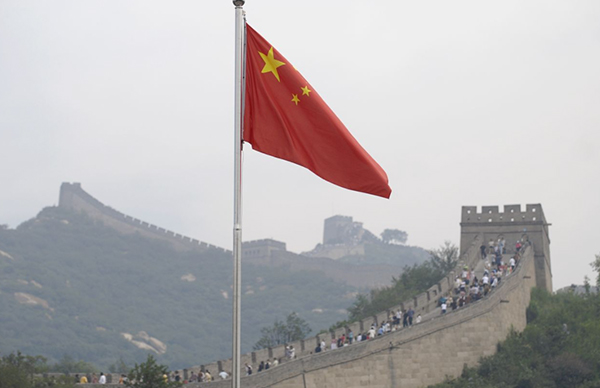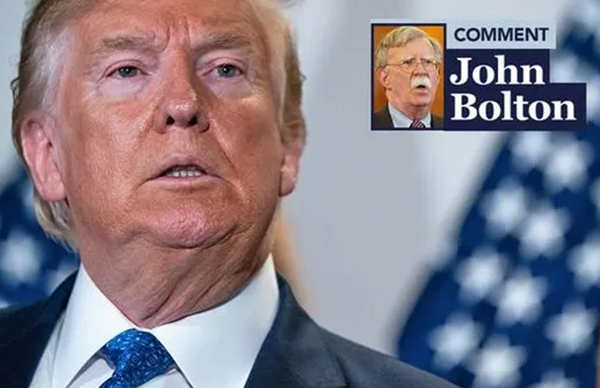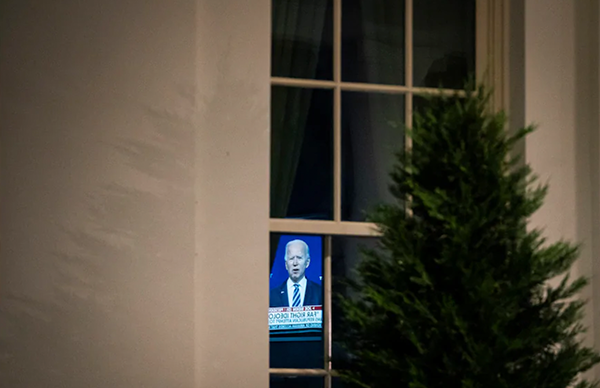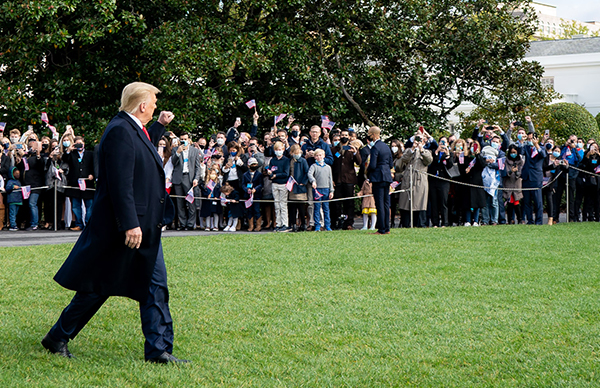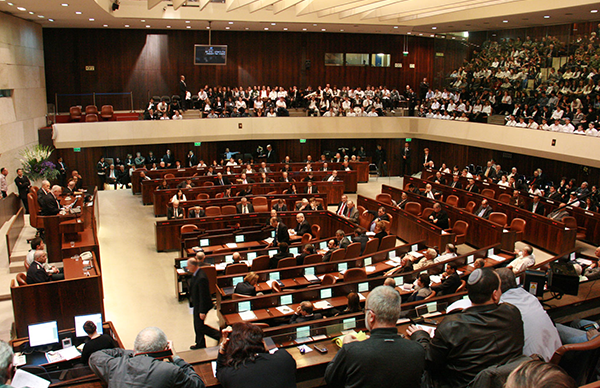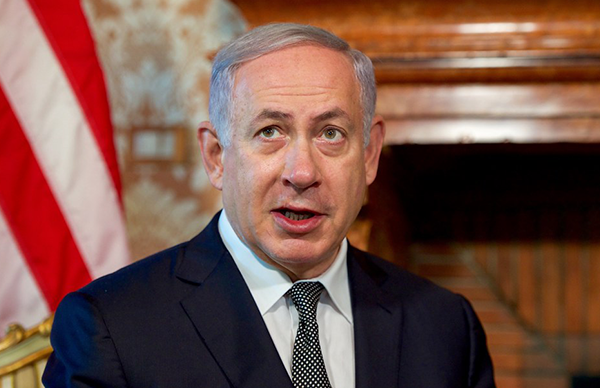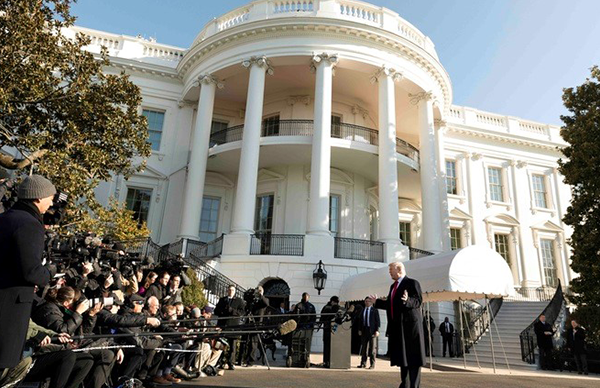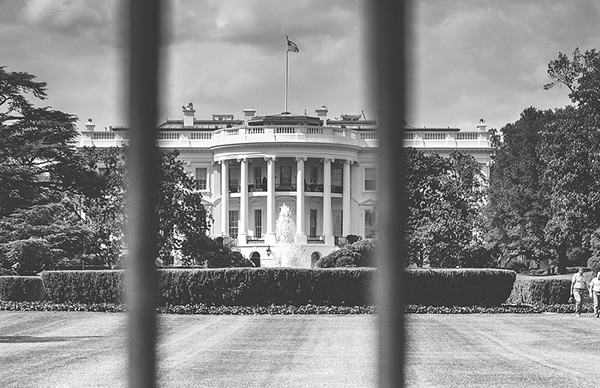By Dr. David Wurmser
May 2, 2020
Israel’s courts and Israeli democracy
Several weeks ago, Yuli Edelstein, the Speaker of Israel’s Knesset (Parliament) resigned to avoid implementing an Israeli supreme court (High Court of Justice-HCJ) edict to reconvene parliament and hold a vote to oust himself. Not only did the HCJ ruling upturn delicate negotiations for a national unity government, but its interference compromised the independence of the legislative branch and escalated this particular political crisis to a crisis of governance.
Moreover, the HCJ accepted appeals by several leftist factions and organizations to consider motions early next week to annul the agreement establishing the current unity government under Likud party caretaker Prime Minister Netanyahu and the centrist Blue-White Party leader, Benny Gantz. Should it do so, it would throw Israel into a fourth round of elections and dangerously undermine the credibility of the courts.
Culture pivots away from Europe but the courts do not
The roots of this crisis are deeper and older than the current round of actions by the HCJ. The composition of the legal elites, including the community of judges, of Israel is an anachronism. In contrast to how vacancies on courts are filled in the US — either through a process of appointment by the elected strata of the state or through elections – sitting courts and dominant lawyers of Israel themselves largely dictate the process of naming judges to vacancies since its creation in 1948. As such, the legal community in Israel, especially the courts, has been an insular, closed circle since the State’s founding.
At independence, Israel was almost entirely Ashkenazi (European Jewish), aggressively secular, Kibbutz-based and strongly left-leaning. All structures of state power from independence in 1948 until the first election of a non-Labor government in 1977 maintained a political litmus test of belonging to the dominant Labor Party for appointment, and thus the upper strata of the military, academia, courts, bureaucracy, state-run industry, cultural institutions and so forth were all homogenous Labor Party stalwarts. They were Israel’s “Mayflower” elites, who claimed to have been the only ones who created the nation, and thus should rightfully rule over the state.
And yet, Israeli society and culture have advanced so far beyond that original “Mayflower” composition and political orientation. It is a country dominated now by the very populations largely disenfranchised by the early socialist state: Sephardi (oriental Jews), Russian and Ethiopian immigrants, those Jews lapsed but still respectful of religion, Jews who remained traditional and religious, settlers, liberal-nationalists and religious-nationalists. The result in terms of political shifts is dramatic. While Labor held the premiership continuously from independence until 1977, it has held the premiership only 8 of the last 43 years since. There has not been a prime minister from the Labor Party since the millennium turned and Clinton was sill president. In fact, the eclipsing force of Israel for its first three decades, the Labor Party, can alone no longer even muster the required three percent of the vote to cross the threshold to maintain any seats in the Knesset. Either a centrist, center-right or right block government has
ruled Israel since the late 1990s. Even the officer corps of Israel’s military, one of the last bastions of the old elite, has in the last two decades yielded to the bewildering medley of Israeli society and of their own ranks, and begun to more closely reflect the composition of society at large. In contrast, the ruling legal elites and courts in Israel are a holdout of an Israel transcended by an intensely dynamic society, and are thus now starkly out of alignment with the society in which they live and judge.
This disconnect is exacerbated by an accompanying shift in the fundamental concepts that inform the purpose of the court. The north star of Israeli politics – including how it views the role of the courts in government — until the early 1970s was Europe, and in particular France and the world of continental European politics in the two centuries since the French revolution.
Israel’s legal system both originally and still today looks to pattern its role and rulings to European courts, especially the Court of Justice of the European Union (CJEU) and its subordinate European Court of Justice (ECJ) and General Court (GC). Apart from a difference over whether rights are inherent and inalienable or granted by the state, European courts, led by the CJEU, believe their role is also to monitor the institutions of Europe –state and private — to ensure that they operate and implement the spirit of the European Union. They not only assume judicial review of laws to ensure they are consistent with the EU founding documents and principles, but they also stand in judgement over other state institutions as the ultimate authority of defining and ensuring their behavior accords with and advances the EU’s political program and aims. In other words, they rule foremost to enforce and ensure the political ideals of the EU.
Politically and culturally, however, Israel today is oriented far less toward Europe and more toward the United States. Israel’s politicians, justice ministers, research institutions and a growing body of legal scholars increasingly view the United States and Britain as the touchstone for understanding basic political concepts and theories, even of law. The appointment several years ago of Ayelet Shaqed (currently of the Yamina party), as the Justice Minister, both symbolized and accelerated that shift. Shaqed had written extensively on how Israel should embark on wide-ranging legal reform, and that it should look to the legal philosophy and the role of the judiciary as understood in the United States, rather than continental Europe. One of her seminal articles defining her reform effort was published in 2016 by the Hashiloach Institute, under the title “Tracks to Governance (Mesilot el Meshilut).”
The battle lines were thus drawn in Israel. On one side was a “Mayflower” continental European- oriented legal elite and a continental European-oriented leftist minority which saw the activist, program-oriented and commissar-like concept of courts as a powerful tool to steer Israeli culture to more comfortable forms. On the other was an increasingly American-oriented political and legal rebellion bolstered by its vast alignment with a dynamic Israeli society far evolved from the world of its “Mayflower” elites and the politicians championing them.
The courts, judgeships, and committees appointing judges have now become the battleground in this battle of two fundamentally different visions of the role of the judiciary, and ultimately of Israeli society.
As a result, there has been an attempt by the legal elite in Israel, along with supporters from the left side of Israel’s spectrum, to raise not only the stature, but the legal status, of the HCJ — as
their last bastion of power — to a prima inter pares, or even elevated Olympian committee overseeing all other “lesser” branches and demanding their approval for all their actions. In other words, they seek to become the Israeli chapter of the CJEU, ECJ and GC. This effort is increasingly intense in recent years for two reasons. First, the left has found itself unable to win an election enough to form a governing coalition, and thus seeks to disempower the elected branches of government at the expense of the unelected but sympathetic judicial branch. Second, the elected Israeli governments of the last decade have made judicial reform – especially the idea of opening the closed, self-preserving circle of judicial appointments – a top priority. The frustration of losing power election after election, and the despair of being challenged by reform, has made both the left and the legal elites and judges view the current situation, and especially the trendlines which hold no hope for a reversal (indeed promise only to deepen and accelerate) in stark terms with their backs against the wall.
From judicial review to the rule of judges
The HCJ chief justice from 1995-2006, Aharon Barak, is largely credited or blamed (whether you are on the left or right) with expanding the writ of the Israeli courts. Until then, Israel’s HCJ applied the “standing” test to any appeal – namely did the appealing party have a sufficient connection to the appeal or law under question, or to its consequences, that it justifies that party’s participation in the case. Barak expanded beyond the requirement of “standing” into judicial activism to do two things. First to raise the body of Basic Laws to the status of a de facto constitution, and second, to assume jurisdiction to essentially legislate over any area in which there is a gap in the basic laws. Barak’s judicial activism certainly made many in Israel nervous, but at the same time, Barak still conceived of the court in terms of validating or completing a generally-acknowledged incomplete set of founding laws. He might have also moved into judicial legislation, but limited it mostly to clear areas of vacuum.
Increasingly, however, in recent years the “judicial review” or “filling the gaps” role demanded by the HCJ under Barak has yielded to courts which act without reference to any foundational law, such as a basic law (which Israel has) or constitution (which Israel does not have), or any precedential body of laws (Israel still derives precedents from both British law and in some cases Ottoman law). Instead, courts rely increasingly on the foundation of lofty, and often outright
“invented” and almost always vague theoretical principles appropriate to their Olympian superiority. And almost always, those principles are mere cover for an attempt to rule in the spirit of, and in alignment with, the theoretical ideals and aims of the Court of Justice of the European Union (CJEU) and its accompanying EU-based courts, the ECJ and GC. In short, Israeli courts increasingly envision their mission to be to ensure Israel remains tied culturally and politically to continental Europe and the European Union.
While the Barak court used gaps to legitimize an activist judicial policy, recent behaviors by not only the HCJ, but even lower courts, are directly challenging the power of the executive agencies and legislative branch in order to raise the court system in Israel to a superior position to all other branches of government. For example, several years ago, the Israeli government came to an agreement with the natural gas producers in Israel to suspend proceedings to penalize them as a monopoly in exchange for which they would sell off part of their assets, agree to limits to export, and set a mutually agreed-upon price with the government. This was done through the Anti-
Trust Authority, namely an executive branch agency, and then voted upon by the Knesset, namely the legislative branch. A group of environmental and left-wing opponents of the agreement who wanted to obstruct Israel’s production and export of natural gas appealed to the Tel Aviv district court. The court ruled not only that the appealing parties need not demonstrate “standing” at all, but also ruled that the agreement was inappropriate since the Anti-Trust Authority cannot be considered to have statutory authority. Only a court has legal authority, and thus only a court can rule on monopolies and set prices, not the executive or legislative branches. It asserted that the Anti-Trust Authority is thus no more than an advisory body for the legal branch which alone has the power to compel, rule or set prices. In other words, this Tel Aviv Court was not ruling on natural gas per se, but on establishing not only the jurisdiction of the judicial branch, but its power over all matters in all other branches of government without reference to the Basic Law or precedent. It represented a seizure of power from a clearly defined and legally grounded executive branch authority, not an assertion of power in a vacuum or gap. In short, the Tel Aviv Circuit Court envisioned its mission and authority as the Israeli parallel of the ECJ, whose writ is to ensure all state institutions operate in the spirit of the ideal of the EU.
This sense of superiority over all other branches of government has led Israeli courts to expand their authority to the point at which they feel it is appropriate to intervene whenever they believe the electorate, the legislative branch, or executive agencies fail to live up to a set of ad hoc, often invented, concepts of “democracy” or “efficiency.”
In other words, the courts have expanded their power and established their superiority in order to postion themselves as the mechanism of validating and legislating their vision of culture and politics, let alone policy. They have become the self-appointed (and continuously self-
appointing) “adults” standing over all facets of Israeli society and judging its desirability and appropriateness – which is precisely why the courts have become so important for Israel’s left. Just as the courts’ and legal elites’ composition has increasingly become unaligned with Israel culture, society and politics, so too has Israel’s left been losing out politically and culturally in otherwise permanent structural ways. Increasingly unaligned with broader Israeli society, the left and judicial elites are equally aligned with each other.
This was not lost on centrist and right-leaning Israeli politicians. One of the most important efforts of the last half decade were the judicial reforms championed by the Justice Minister of the previous government, Ayelet Shaqed. At the center of her efforts at reform were to break the closed circle of judicial appointments – thus attempting to align the judicial branch and the legal elites more closely with the flavor of Israeli society. She not only opened up appointments to a far broader cross section of lawyers representing all the hitherto disenfranchised communities in the highest rungs of the legal structures, but also changed the appointment process from one allowing the current elites and judges to dominate the choosing of their successors to a committee drawn from the democratically elected stratum of government and committee members from a wide spectrum of Israeli society. For Israel’s “Mayflower” legal elites and their allies on the left, this crossed the Rubicon. They saw themselves at war for survival against the emerging culture, its political champions and the legal rebellion waged. In that war, who rules Israel (and thus appoints its judges) became the bottom line of survival.
The rule of judges triggers a government crisis
In response, the current HCJ under the chief justice, Esther Hayut, has taken the concept of judicial supremacy to the highest level, and is maneuvering the court into the hazardous terrain of deciding “who rules Israel” to the very top.
The last month has revealed the extent of the problem. Acting on behalf of the factions in parliament seeking to undermine the national unity negotiations, she jettisoned legislative independence and authority and executive agency statutes and traditions, and applied vague and unknown legal principles, such as “efficiency of the court” and “essence of democracy.”
The “efficiency of the court” concept was evoked to deny a motion on Monday (April 27) by coalitional lawyers to have two or three days’ time to formulate their answers to the appeals and formally submit them, given that Tuesday and Wednesday were national holidays. Instead, she decided, the HCJ itself will gather internal discussions, initial responses and statements made hitherto, and rule that they constitute for the defense what their defending arguments will be so that the hearing can proceed for Sunday (May 3) without delay. In other words, the HCJ assumed the rights traditionally left for the defense on how they will argue their defense, and did so not through law or precedent, but some murky legal principle of efficiency.
The latter concept, the “essence of democracy,” was used to justify ordering the abandonment of tradition and rules of the Knesset to force Yuli Edelstein to convene parliament and hold a vote to terminate his own speakership, even though this violated all precedents and traditions, as well as compromised the ability of the legislative branch to set, or in this case preserve, its own internal rules, ways and means. What was even more disturbing was the political undertone of the ruling: its ruling at the behest of an appeal by the opposition party faction (Yesh Atid) to force the Knesset to act in a way that would have sabotaged the unity talks – namely it interfered in the final phase of the election cycle (coalitional negotiations to from a government) to achieve a political, not legal, result. It was this violation of the legislative branch’s independence which led Yuli Edelstein – a human rights activist who earlier had been imprisoned in the Soviet Union for his advocacy of freedom — to submit his resignation in protest.
Which brings us to the current appeals and the crisis they threaten, starting on May 3.
The coming showdown
Early next week, the supreme court will rule on three separate aspects which could unravel the unity government. The first is whether a prime minister can be appointed or continue to rule while under indictment. Israel’s basic law says he can. Some on the left argue that this does not apply to an interim government – although the Basic Law states that an interim caretaker government (one that rules between when Parliament dissolves until a new coalition is agreed and a new government sworn in) has all the rights and responsibilities of a regular government. Of course, this is at any rate irrelevant (or at least should be) in terms of the new unity government, since it represents precisely the termination of an interim caretaker government and its replacement with a permanent one. The attorney general of Israel, who is not considered sympathetic to Prime Minister Netanyahu (he issued the indictment against him, in fact), has
already issued his opinion that under both Israel’s Basic law and the precedent of British Law, an indictment does not justify preventing the appointment of a prime minister either as an interim caretaker or permanent since he must be allowed the presumption of innocence. At any rate, in an outright attempt to both legislate and undermine the existing and clearly written terms of the Basic Law, the appeals on this issue seek to use the courts to change the Basic Law in direct opposition to its current terms or spirit.
The second cluster of appeals argue that the terms of the coalition agreement must be annulled since they would involve changes to existing legislation, and that can be done only by the Knesset. The lawyers for the unity coalitional government argue that the Knesset vote to accept the national unity government – which is considered an act of legislation – supercedes the laws it might contradict and thus becomes the new law, as would any other legislation. In contrast, the appeals by the left to the HCJ assert that those laws must have been changed prior to the agreement’s having been reached, since the agreement thus would have been signed that includes binding provisions at variance with Israeli law. As such, they argue, the law cannot really even be brought to a vote since it is not consistent with current law.
The third cluster may not be major enough to derail the agreement to form a national unity government, but it could seriously complicate its terms enough to threaten its having to be reopened. It involves a finance issue and is intricate enough to rise to the level of Talmudic discussion.
The Blue-White party was an amalgam of three parties: the Yesh Atid party under Yair Lapid, the Telem Party under Moshe Yaalon, and the Hosen party under Benjamin Gantz, which held the lion’s share of the Blue-White list. As the national unity talks culminated and an agreement
was signed, the Yesh Atid and Telem parties refused to join, and the Blue-White Party split, with Gantz’s faction being able to retain the name of the umbrella party (Blue White). Two other Knesset members, Yoaz Handel and Tzvi Hauser, broke with their mother party, Telem, and voted with Gantz to establish the national unity government. To do so, they formed a new faction within the Blue White party, called Derekh Eretz (a play on words meaning both
“respect” or “the path of the country”), as part of the truncated Blue-White party. The Telem party, however, refuses to allow the Knesset to pay and support the new Derekh Eretz faction, or to allow the Blue-White party to assume the Knesset disbursement, instead claiming that the two Knesset seats still must be calculated as part of the Telem party from which they split. In short, Telem and Yesh Atid receive payments for two more Knesset seats than they have, and Blue- White party is paid two less seats than it holds. To note, Tzvi Hauser is one of only two appointments to critical positions named in particular in the coalition agreement. Passage 26 names him to become the chairman of the powerful Knesset Foreign and Defense Policy Committee, as well as the Blue-White representative to the powerful Committee to Appoint Judges, so this payment issue is really a back-door attempt to gut several critical passages of the coalitional agreement (those dealing with the formation of the Knesset defense and Foreign Affairs Committee and the Committee to Appoint Judges) which refer to Hauser. To overcome this problem, the Knesset voted to pay separately for the Derekh Eretz faction consistent with all other factions while still paying the Telem faction for the two seats it actually does not hold. In short, the parliament is funding 122 of its 120 seats. The left has submitted an appeal to the HCJ demanding the court annul it and strip Derekh Eretz of funding.
Given how important the Committee to Appoint Judges is to the entire judicial reform process, one can understand how important the preservation of Clause 26 of the unity government agreement, which names Hauser as the Blue-White party representative to the committee, is.
Which is precisely why the opponents have zeroed in on this in several of their appeals.
At this writing, it is unclear whether the HCJ will rule against the unity government in part, all or none of the appeals.
Conclusion
Israel is not alone in having faced such crises early in its life. The United States was less than a decade old when the lack of clarity of the Constitution in defining the power and role of the US Supreme Court — came to the fore. In 1789, precisely because the Constitution only set up the Supreme Court and limited its power as a court of original jurisdiction but was rather vague on the power of the rest of the nations’ courts, Congress passed a law vastly empowering the Supreme Court. A decade later, a Constitutional crisis emerged between President-elect Jefferson and his Secretary of State James Madison on one side, and the outgoing president John Adams and a court appointee he named, William Marbury on the other. The exact nature of the conflict is not important here but suffice it to note that the Chief Justice at the time, John Marshall, understood he was entering exceedingly dangerous terrain. If he sided with Adams and Marbury, then the incoming president would regard the court as a pawn of Adam’s Federalist party, therein severely undermining the authority and credibility of the court, perhaps even to the point where Jefferson would use the power of the presidency to impair it permanently. At the same time, buckling completely to the demands of Jefferson and Madison would expose the court as subject to political pressure, therein damning the court into constant political pressure for eternity. Justice Marshall knew the law was with Adams and Marbury, but nonetheless thread a very delicate line that ironically limited its own power to at once empower the court, establish its independence and preserve its credibility. Marshall gave and took to and from both sides. He ruled that Marbury was entitled to his commission, but that the 1789 Judicial Act overstepped the bounds of the Constitution, and that the court therefore could not be a court of original jurisdiction. In doing so, he established that the Supreme Court cannot change the will of the executive and legislative branch, but that it has the power of review of their actions. And yet, at the same time, that right of review exists only within the point of reference of the Constitution and distinctly not as an alternative legislative or superior power. Thus, paradoxically, Marshall preserved, indeed strengthened, the power of future courts by limiting the power of his own court and those that follow.
A century and a half later, one of the greatest legal minds ever in the United States, Judge Learned Hand, nailed down the issue even more precisely and overtly. He argued that not only is the US Congress’s legislation a reflection of the democratic will of the people, but that the US Constitution is itself legislation, and thus a manifestation of will of the people. Judicial review and overturning legislation, is therefore a serious affair – since it is by its nature an act contradicting the democratic will – and can only be done in strict reference to the founding act of democratic will, the US Constitution. One cannot at the same time undermine the democratic foundation for legislation (arrogating it instead to the courts) while appealing to the democratic
sanctity of the founding legislation enshrined by the very existence of the Constitution. He wrote, thus, that a court simply cannot overrule the legislation of an elected body in anything other than an extreme circumstance. To legislate from the bench is, thus, no less than establishing the tyranny of an unelected court.
Israel is facing its Marbury moment. Like Marshall, Justice Hayut will need to limit the power of her own court to preserve its credibility and establish its defined authority going forward. She would need to take the appeals seriously enough to establish that she is not simply buckling to the pressures of the unity government, but she needs to avoid taking a political stance and siding with the left in a scheme to torpedo the unity government and force new elections, which would strip the court of credibility as neutral, therein truly undermining the rule of law.
Will she do that? Sadly, doing so would be a departure from her judicial behavior thus far. Her actions over the last week elicit concern. Moreover, in the hearing to order Speaker Edelstein to convene parliament to vote himself out of office immediately, she never crafted her ruling in legal terms, nor do the minutes of the hearing indicate any genuine discussion on her part of the legal complexities of this case. Instead, she, much like the CJEU appealed to ideals rather than law. She acted summarily in the name of “preserving the essence of democracy.” She has gone quite some distance already in recent rulings toward creating precisely the dangerous condition Judge Learned Hand warned about nearly a century ago: a tyranny of the courts.
Moreover, she is not alone. The established judges and legal elites, along with the left side of the political spectrum in Israel, have joined forces to preserve the supremacy of a bygone elite and their world view. It is a dangerous trend. But courts cannot and should not control, let alone change, cultures, and they will discredit themselves trying. Simply, courts cannot exist as powerful, credible and neutral in opposition to the culture and will of the people, let alone be able to lord over their populations while passing moral, social and political judgements against it for long.
